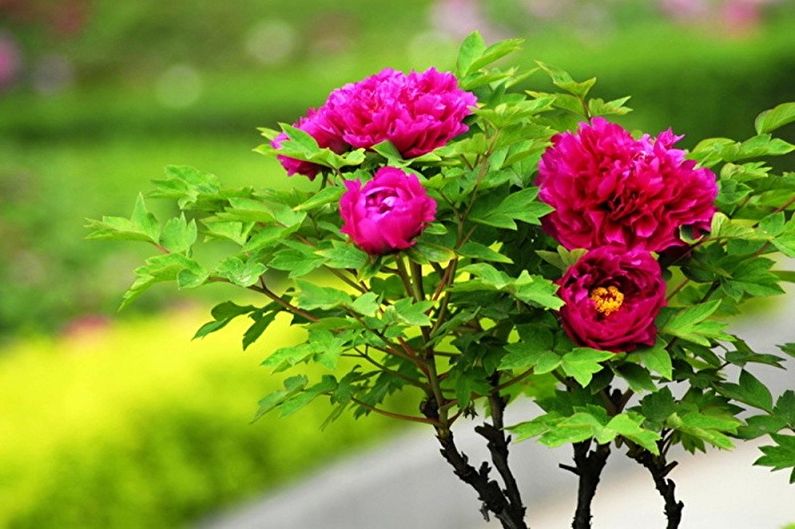
Bushy tree peonies are incredibly beautiful and fragrant. Moreover, they are low-maintenance, seldom fall sick, and have long lifespans. That’s why many gardeners dream of having this lovely flower in their gardens.
Description and Types
The tree peony is one type of plant from the Peony family. Many botanists agree that it represents a whole group of shrub-like plants. Nonetheless, everyone agrees on the general characteristics of this beautiful flora.
So, tree peonies are bushes that reach heights of 150–200 cm (59–78.7 inches) with light-brown stems and large flowers in red, white, yellow, or pink. The petals are large and have a ruffled texture, with prominent stamens against them. The blooms can be either full or semi-double in texture. The flowering lasts for two weeks, but if the weather isn’t too hot, the period can extend. Even after the blooming ends, the shrub remains beautiful and retains its decorative qualities thanks to the lovely leaf shape.
The tree peony doesn’t demand intricate care and is generally resistant to various diseases.
Today, there are officially over five hundred varieties of these peonies. Most of them originated in China. A vast number of types typically fall into several main groups:
– Hybrids resulting from crossing the Delavay peonies with the yellow ones;
– The Sino-European group has large blooms with a full texture;
– The Japanese type can have either non-double or semi-double, delicate flowers;
– The Ito hybrid variety comes from crossing the herbaceous and tree peonies, inheriting similar foliage from the former and a stem that droops in winter from the latter.
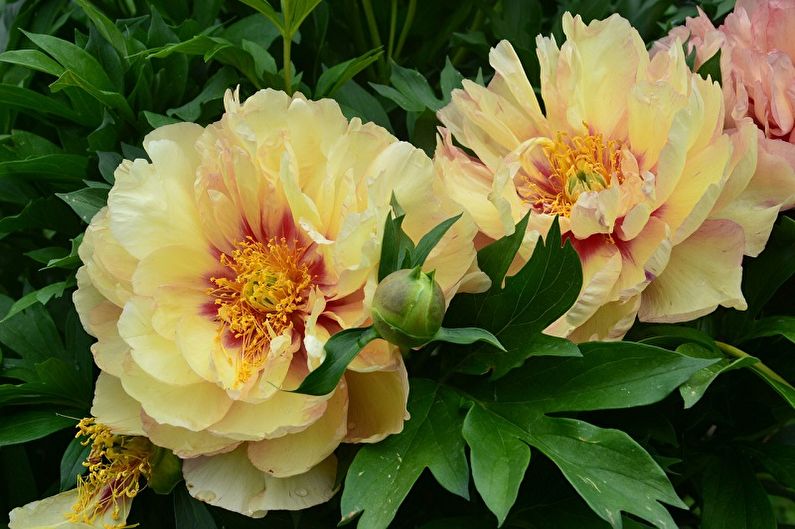
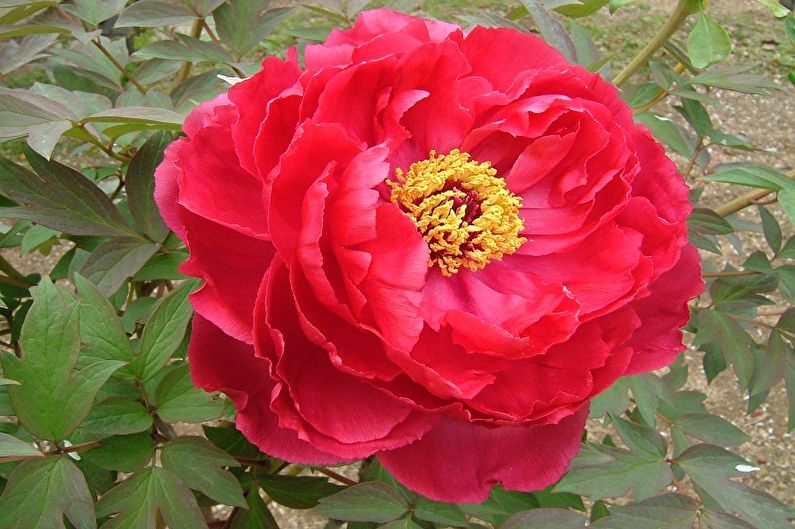
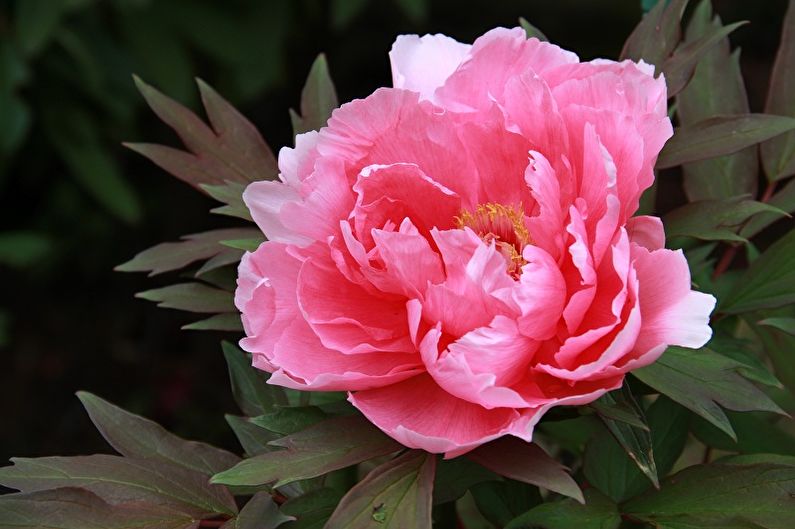
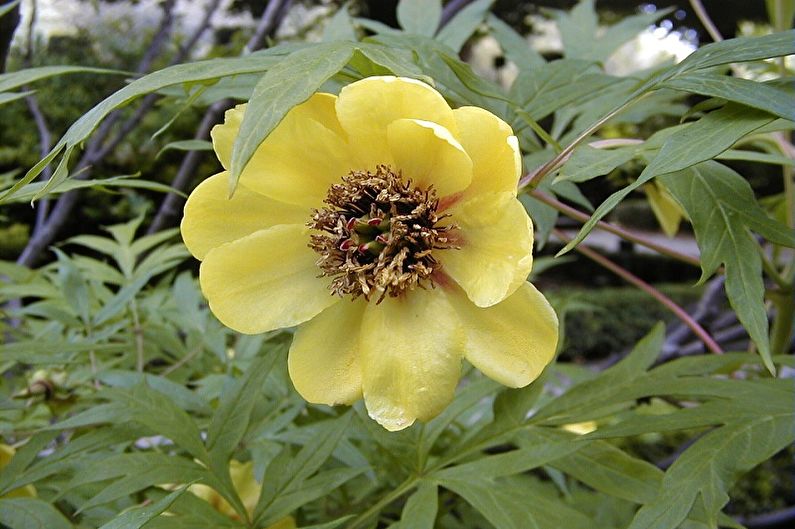
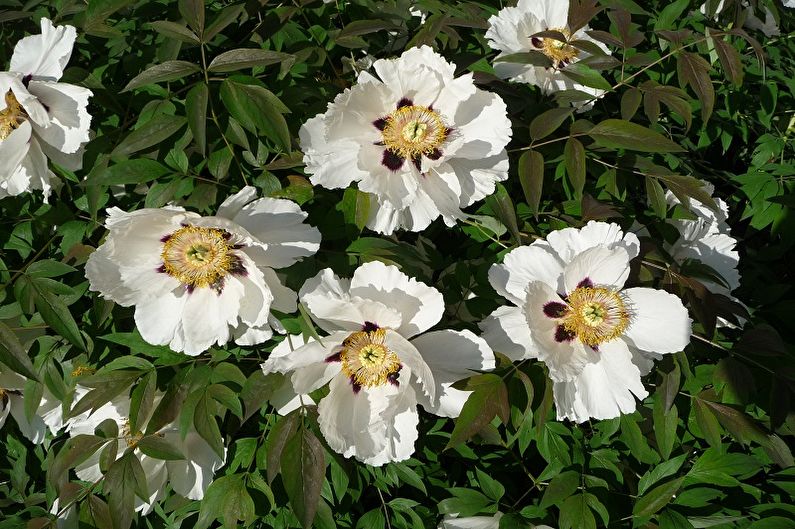
Planting Tree Peonies
It’s best to plant peonies in the fall. This starts from the second half of August and lasts until the end of September. Before planting, choose a location where these lovely flowers will thrive. Tree peonies love the sun, so they won’t tolerate tall buildings or plants blocking the sunlight.
The best soil option is loamy. If your soil is sandy, enrich it with turf, peat, clay, and organic fertilizer. If your ground is clay, add compost and sand. Don’t overlook these conditions, as they can ensure your peonies thrive for a long time. In fact, the plant can please its owners for up to 100 years!
If the groundwater is situated too deep, you’ll need to dig a conical depression with a diameter of 23.6–31.5 inches (60–80 cm), and place sand or gravel at the bottom in a layer of 9.8–13.8 inches (25–35 cm). If the soil is overly acidic, introduce 8.8–10.6 ounces (250–300 g) of lime. Then, fill in with soil and plant the tree peony. To ensure a solid root growth, water the soil thoroughly. Once the water gets absorbed, cover the depression, making sure to leave the graft union above the surface. When planting multiple specimens of this plant, space them 3.3 feet apart, or even better, 6.6 feet.
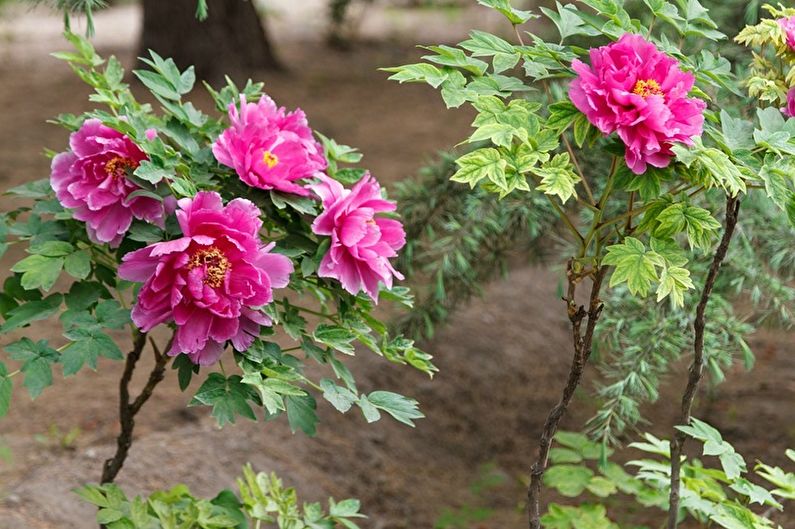
Fertilization and Watering
For the first two years, the tree peony doesn’t require constant or specialized care. After that, consider feeding it with 10.6 ounces (300 g) of bone meal. In early spring, as the plant starts sprouting, and during bud swelling, apply 3.5–5.3 ounces (100–150 g) of nitrophosphate.
Whenever possible, water the plant with ash dissolved in water, preferably 1-2 times a week. After the peony finishes its blooming period, introduce superphosphate into the soil. Around October, when the leaves fall off, mulch the soil surrounding the shrub with peat.
Introduce each fertilizer type after watering to prevent root burns. Be especially careful with nitrogen-based feeds. If you overdo it, the plant might develop gray mold. In many cases, it’s better to avoid them altogether.
Water the tree peony generously but not frequently. Once every two weeks is usually sufficient, using 1.6–2.4 gallons (6-9 liters) of water each time. If the weather is hot and dry, the plant will need more water. After watering, it’s beneficial to mulch the area around the shrub.
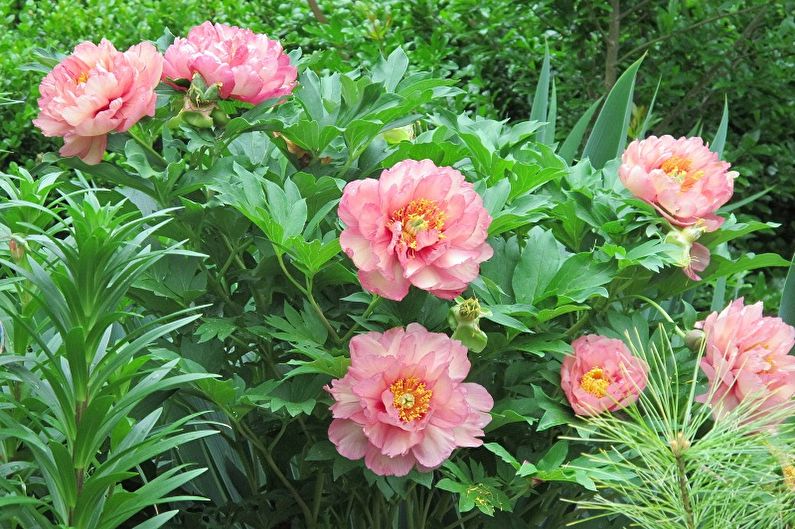
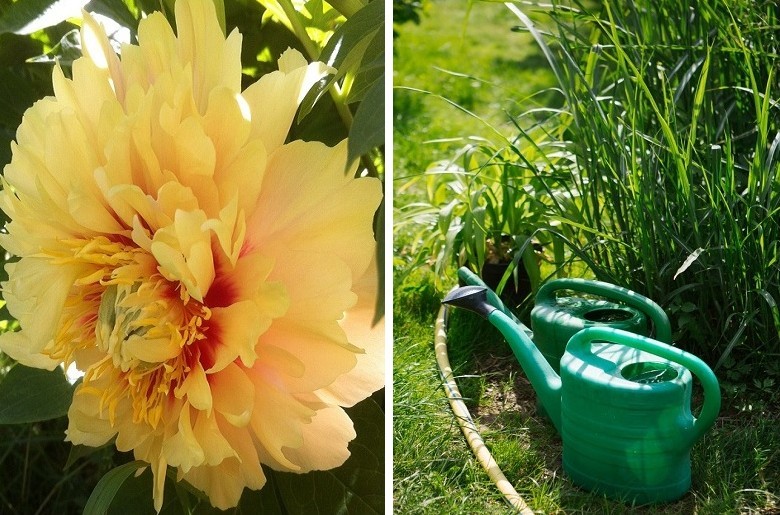
Pruning the Peony
This type of peony needs pruning every spring. Remove old, dried, or broken branches. It’s also a good idea to prune the shrub after the blooming period. Remove seed heads and trim the branches slightly.
Chinese experts recommend a “major trim” for peonies every two decades. This involves cutting each shoot down to ground level. This approach ensures rejuvenation and the development of new buds.
Proper pruning ensures good quality and a high quantity of future blooms.
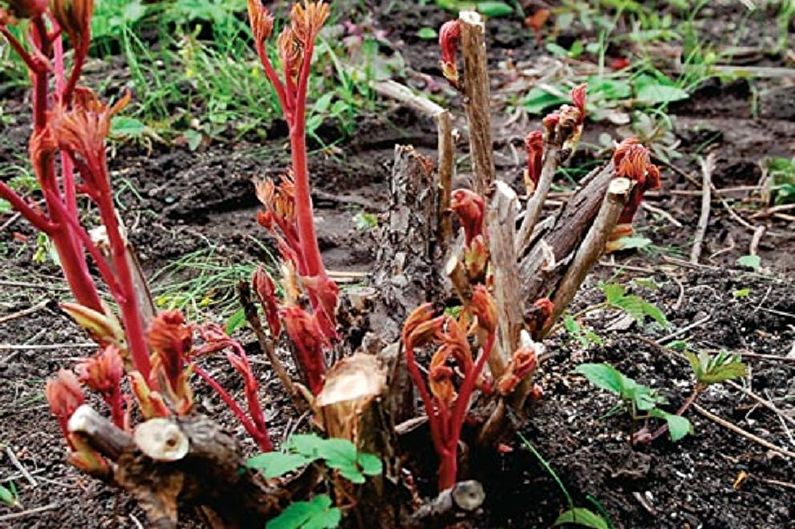
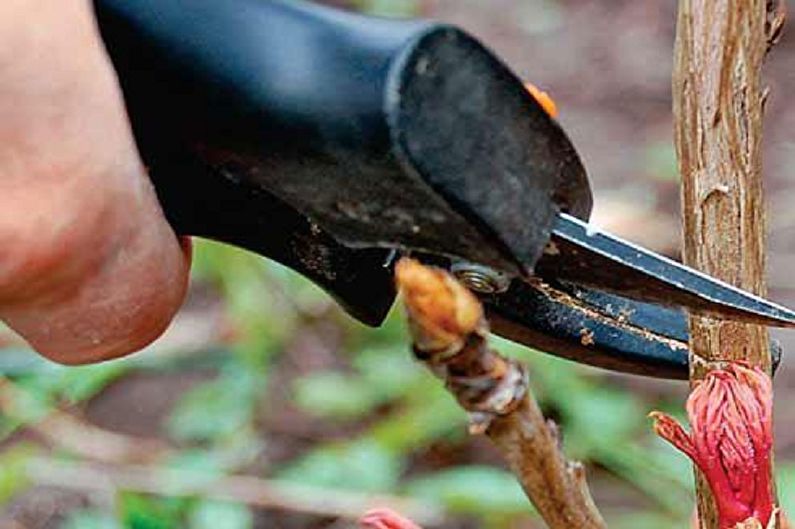
Transplanting Tree Peony
Moving this peony to a new location often proves challenging and at times even painful. Typically, after transplanting, the bush struggles to regain its former vitality for several years. Therefore, you should only transplant it when absolutely necessary and do so with utmost care.
Try not to damage the plant’s rhizome. When digging it up, keep the root intact and even with a good layer of soil, which you should then rinse off with water. Examine the root system carefully, remove unhealthy parts, trim any overly long sections, and then spray the cuts with a 1% potassium permanganate solution. Finally, sprinkle the underground part of the plant with crushed charcoal.
To propagate the bush, divide it at the root collar. If you’ve done this using cutting tools, be sure to treat the cut surfaces. Each peony should have a well-developed root and several buds. Before planting, immerse the plant in a clay solution for 30 minutes.
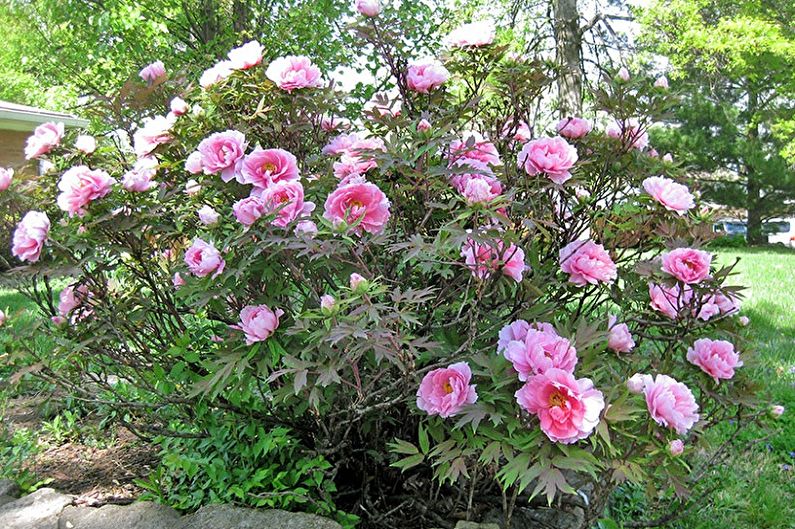
Propagation
As mentioned earlier, propagation from seeds is a complex and inefficient method, and we’ve already discussed division. It’s worth noting that this method applies to mature plants aged 5 years or older. Prepare the bush for division two years in advance. In the first year, hoe the peony several times to a depth of 3-4 inches (8-10 cm). The following year, repeat the process but raise the soil by about 8 inches (20 cm). As a result, the bush produces young shoots that begin to grow their roots by the onset of fall. By spring, once the snow has melted and the ground has warmed a bit, you can start dividing.
Tree peonies can also propagate from cuttings. These should have a woody structure. Cut them off by the end of June, separating the bud along with the woody part of the shoot. Trim half the leaf and plant them about 0.4-0.8 inches (1-2 cm) deep in containers filled with peat and sand. Cover the containers with a bag or glass and ensure regular misting and watering. By early fall, transplant them into separate pots and keep them in a warm place until spring. Once the young plants start growing, you can plant them outdoors.
Propagation using layering takes 2 years. To do this, in late spring, select strong shoots, make a small incision on the bottom side, insert a stake, gently press them down to ground level, and then bury the shoot about 4 inches (10 cm) deep. Water the new layers just as you would the main bush. By early fall, the roots will begin to develop, and that’s when you can finally separate the shoot from the mother bush and plant it in its permanent location.
Finally, the most reliable method is grafting. You should graft onto the rhizome of a herbaceous peony variety. In the first week of August, prepare cuttings from a tree peony with a couple of eyes and sharpen their lower part. Insert the cutting into a wedge-shaped slot at the root of the herbaceous peony. Tightly wrap the junction with plastic. Place the grafted plants in a container with moistened sawdust and keep them in the shade.
After 30 days (approx. 1 month), you can transplant the young peony into a separate container, making sure the lower bud is buried about 2.4–3.1 inches (6–8 cm). Place the flower in a warm spot and grow it for one and a half to two years.
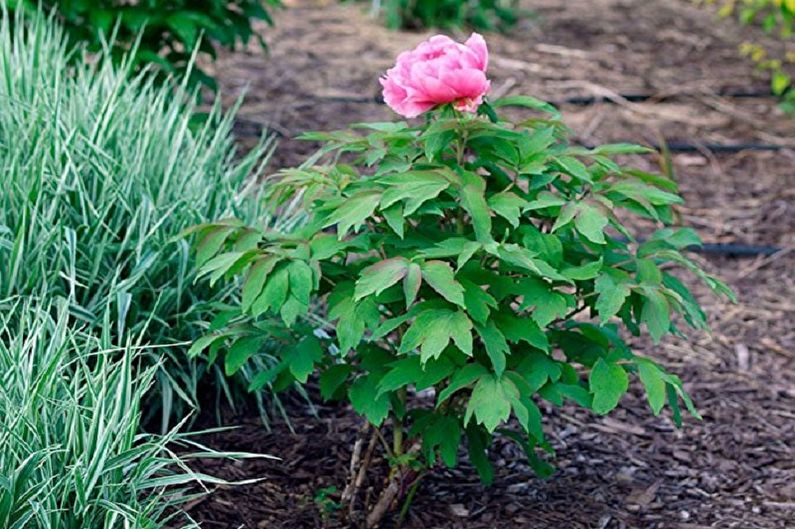
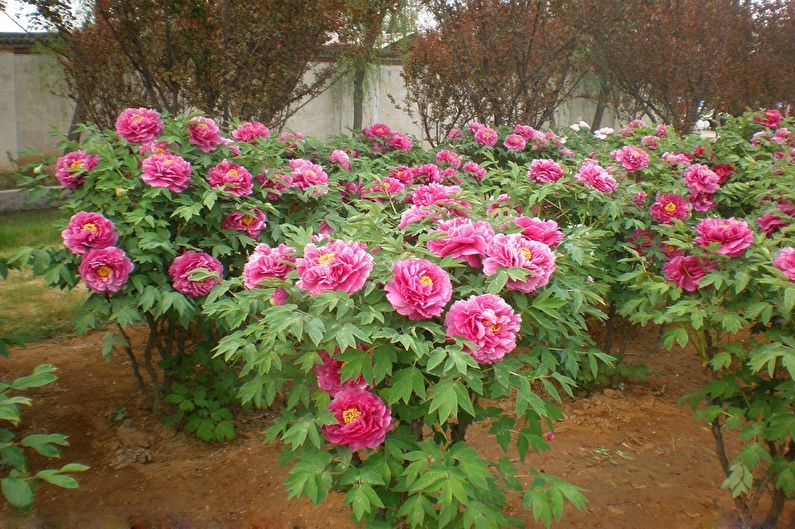
Pests and Diseases
Tree peonies aren’t prone to diseases, but like other plants, they can face some challenges. Typically, problems occur with old and transplanted peonies.
The most significant issue is the formation of gray mold, which can even lead to the death of the flower. You can treat this with a solution of potassium permanganate or copper sulfate. Note that you should dispose of any rotten parts.
Another issue is brown spots on the foliage. Cut and burn these affected leaves to prevent the disease from spreading to other plants. Spray the shrub with Bordeaux mixture according to the application instructions.
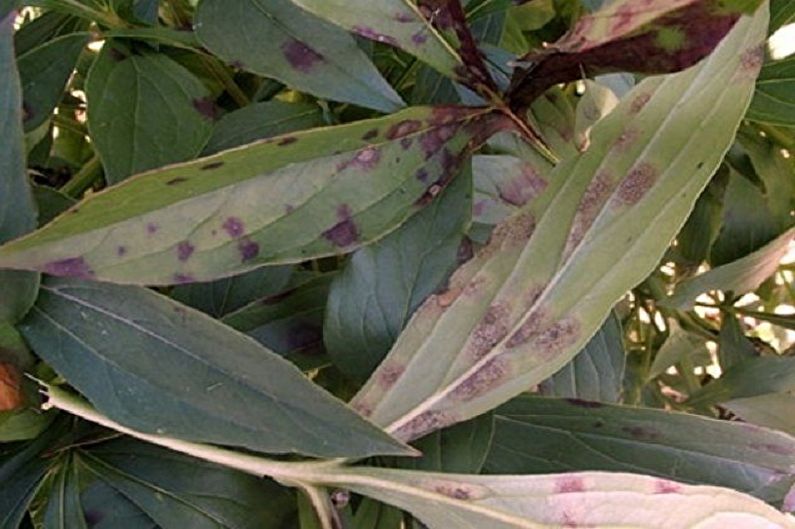

Winter Preparation
Tree peonies have high frost resistance. In the fall, you should cover the shoots primarily to block bird access. However, in regions with harsh winters, it’s recommended to trim the leaves by a third and cover the plants.
Understand that the bush is not as threatened by frosts as by thaw periods. During these times, the peony might start to awaken, but subsequent cold snaps can destroy the entire bush.
To avoid such issues, in mid-fall, tie the shoots together, then mulch the soil with peat. At the first sign of really cold winds, shelter the tree peony with an improvised canopy of leaves, a thick layer of bark, or bags and special covers.
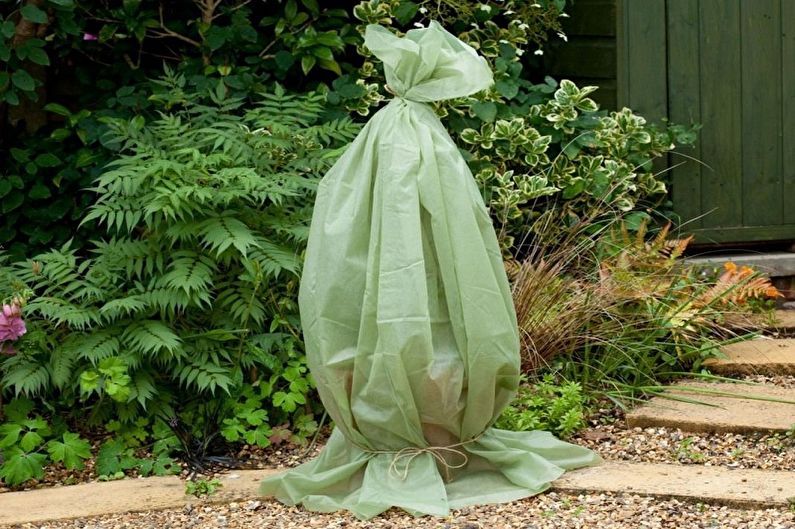
Tree Peonies – Photos
Tree peony flowers come in a wide color range. If you’re deciding on a variety for your garden, you’ll surely get inspired by a collection of photos showcasing these beautiful plants in a vibrant array of shades and shapes.
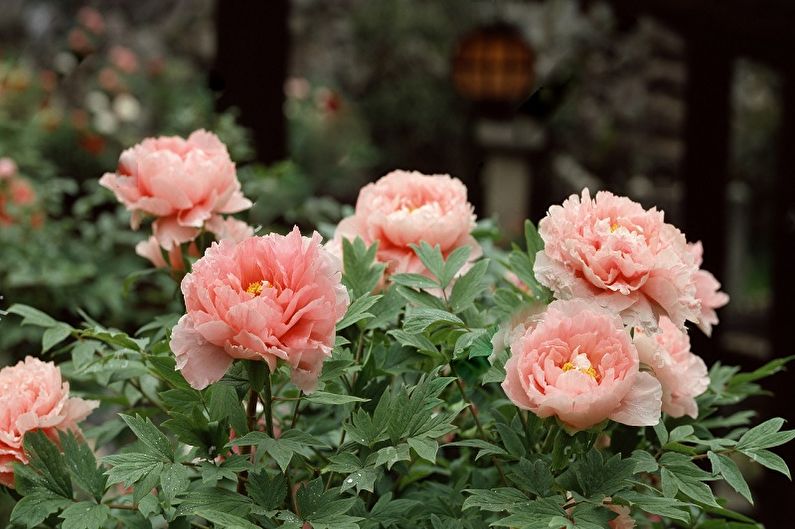
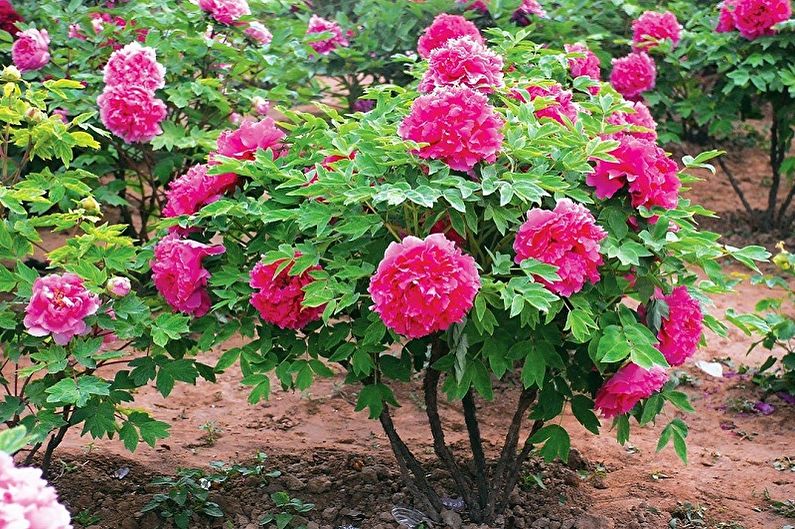
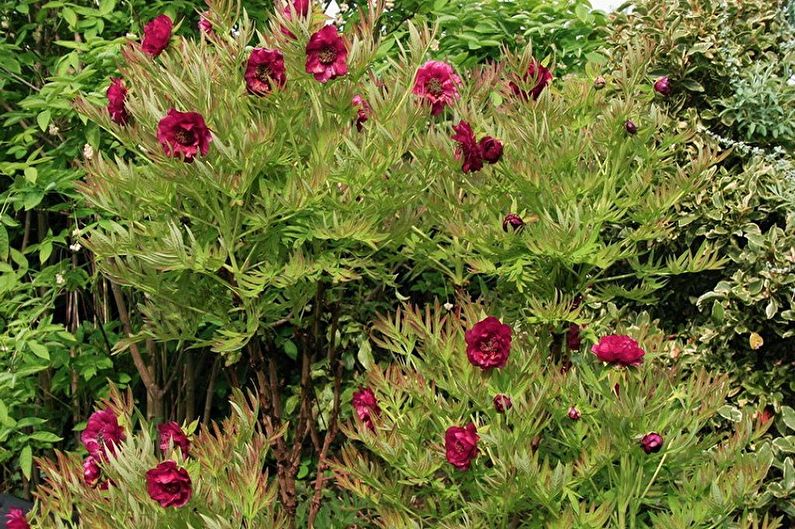
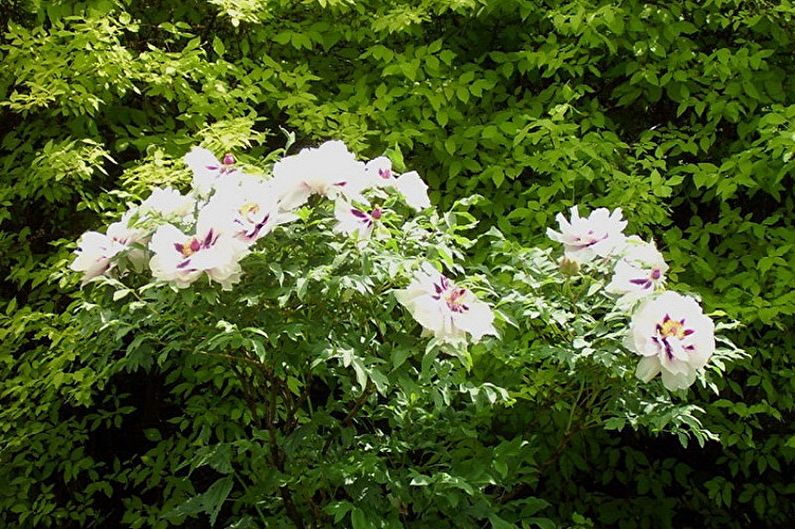
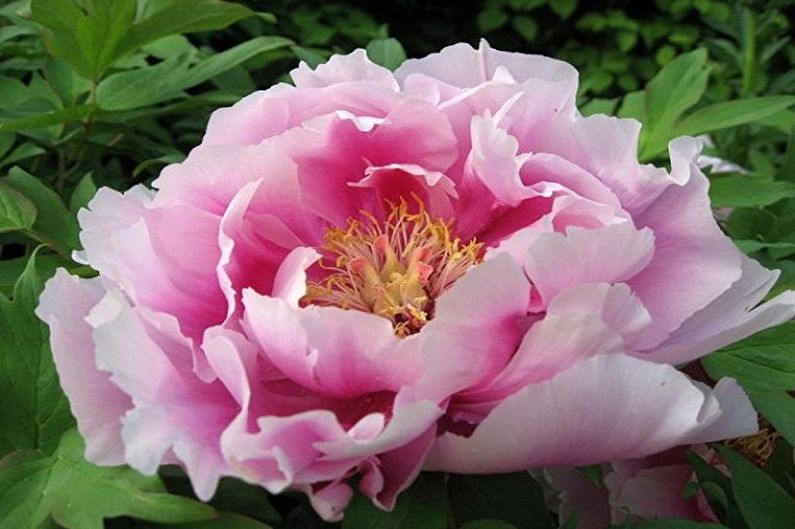
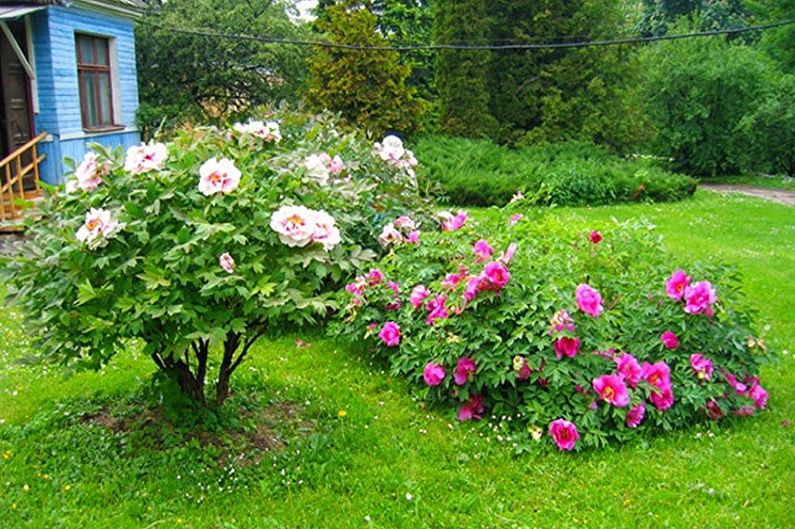
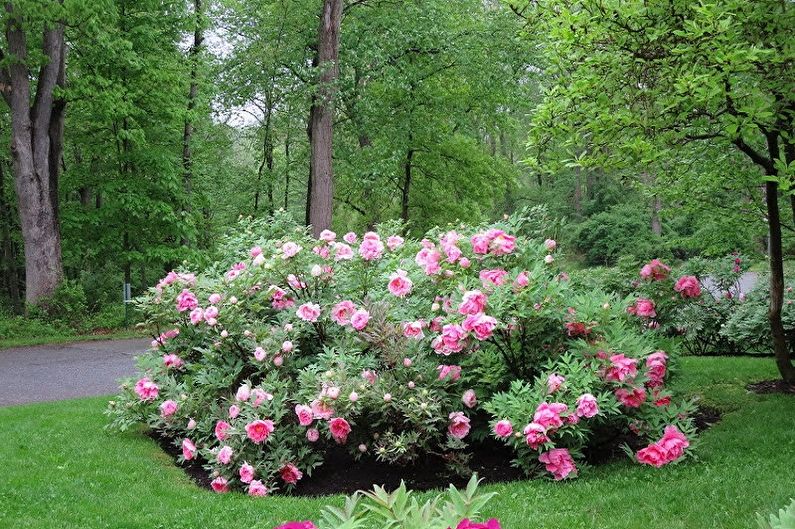
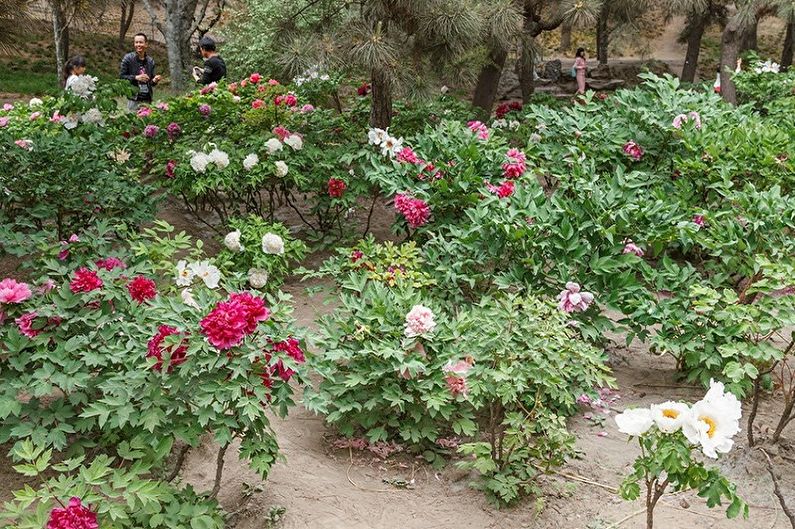
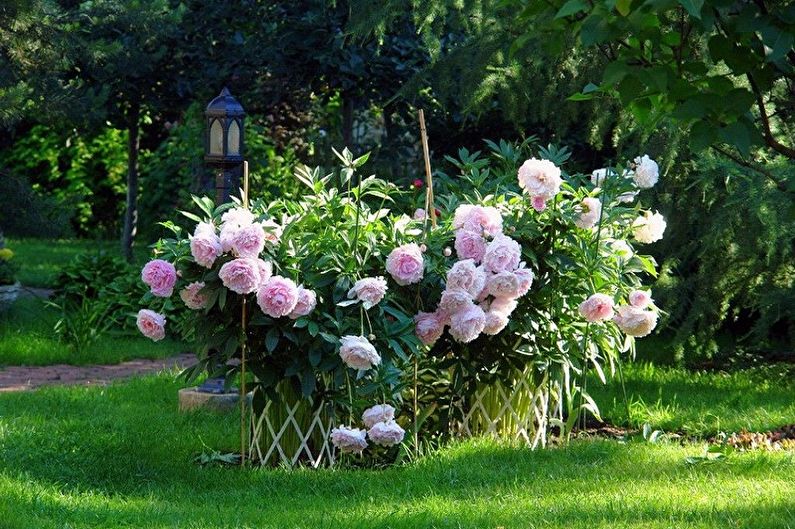
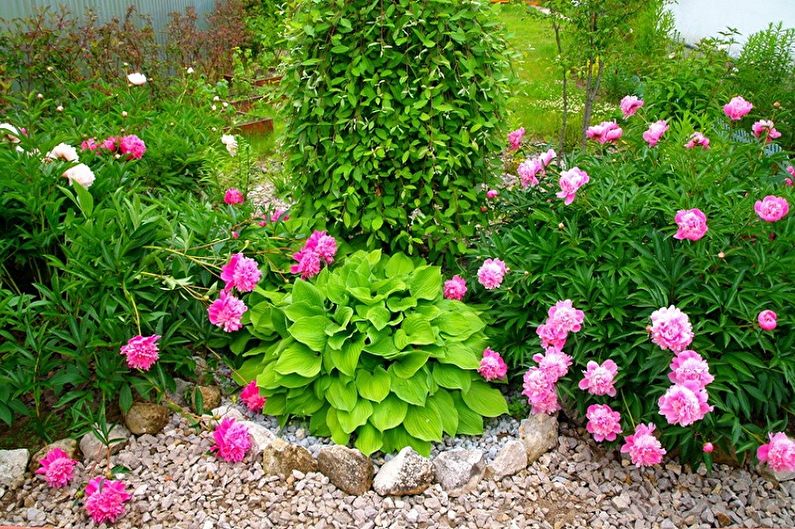
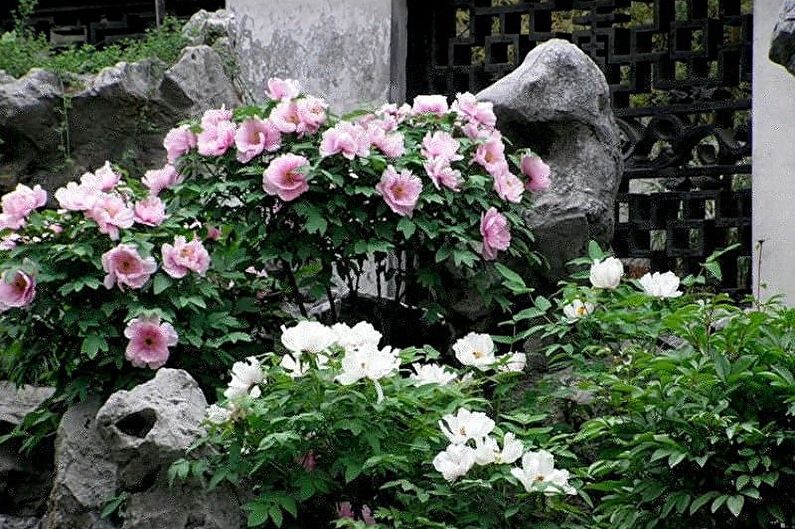

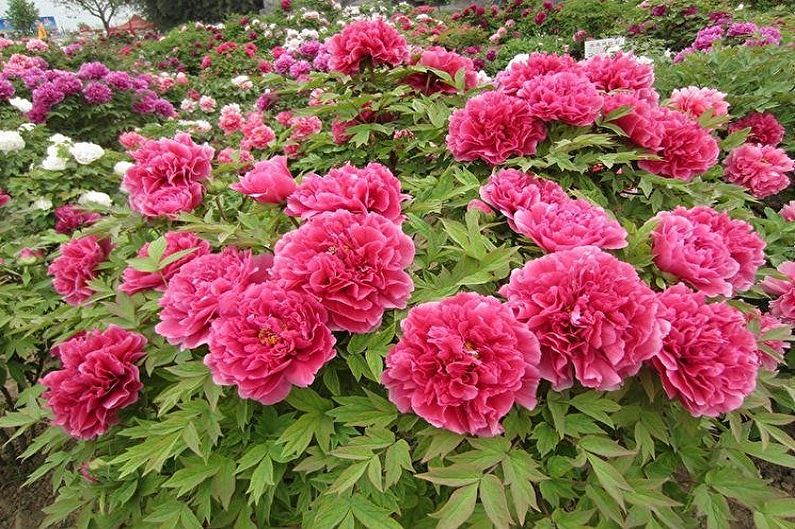
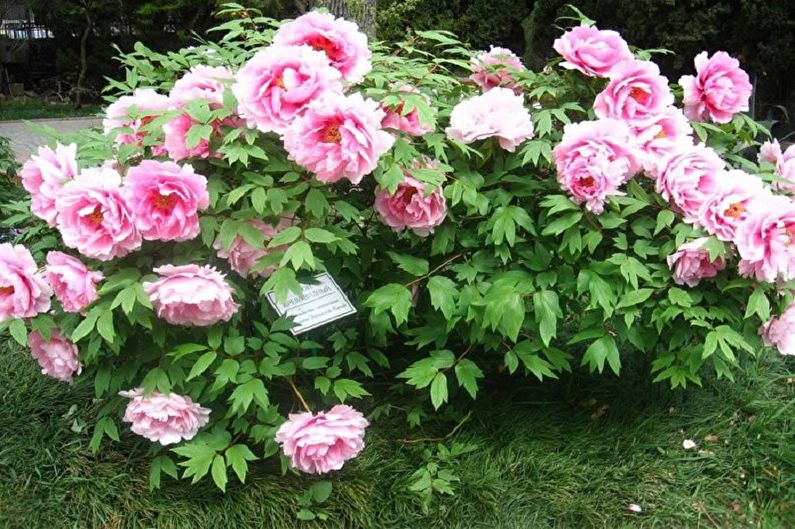
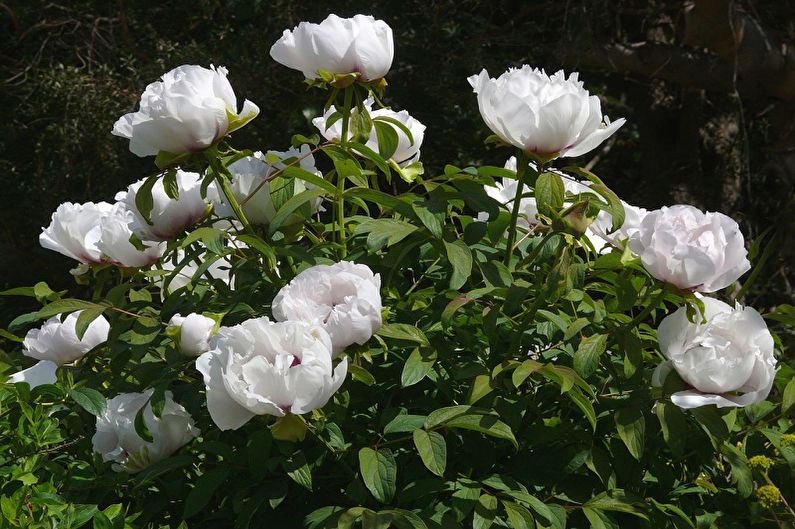
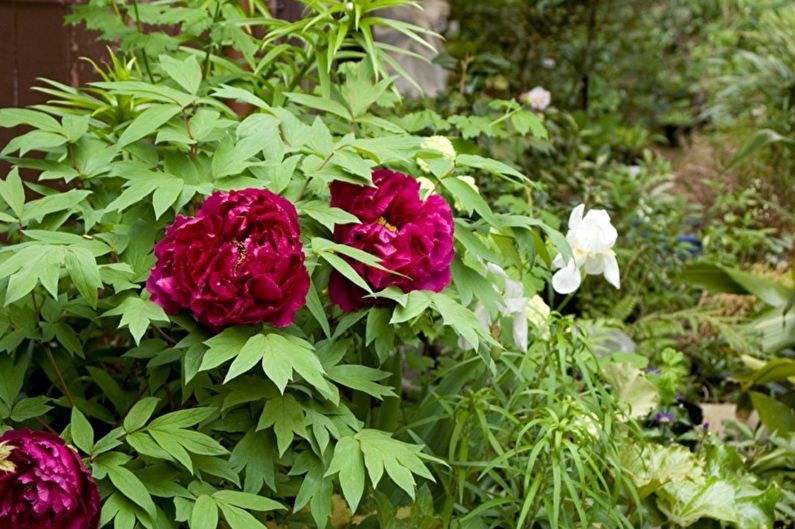
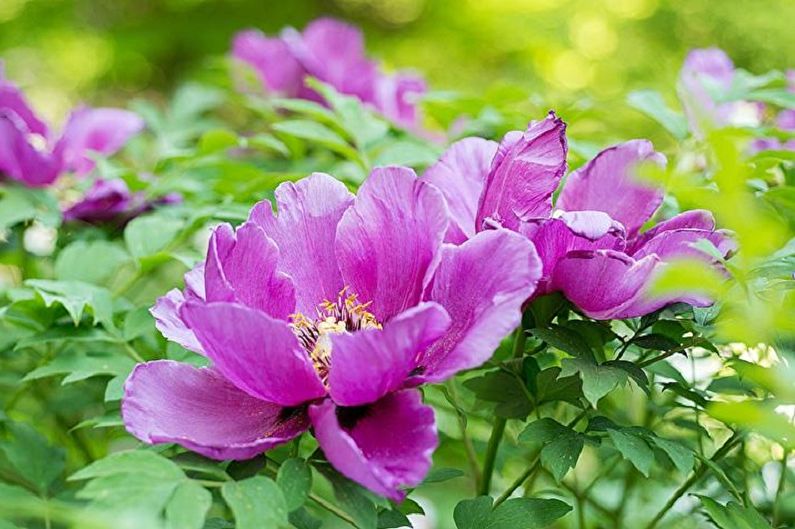
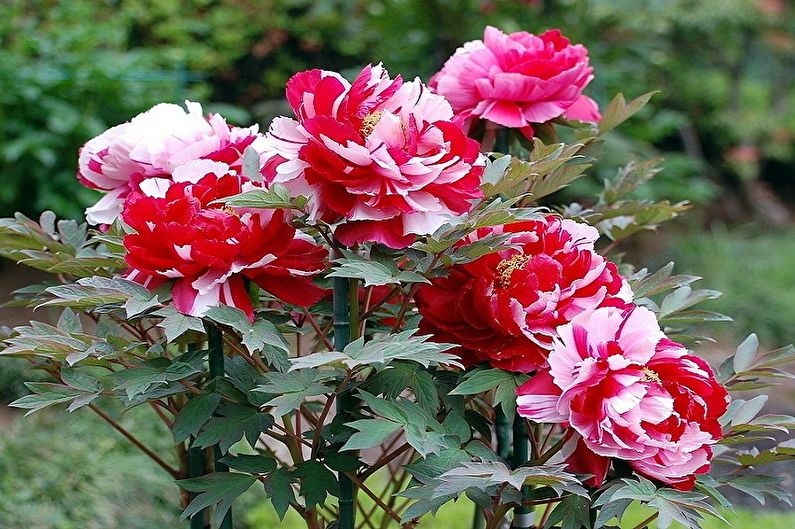
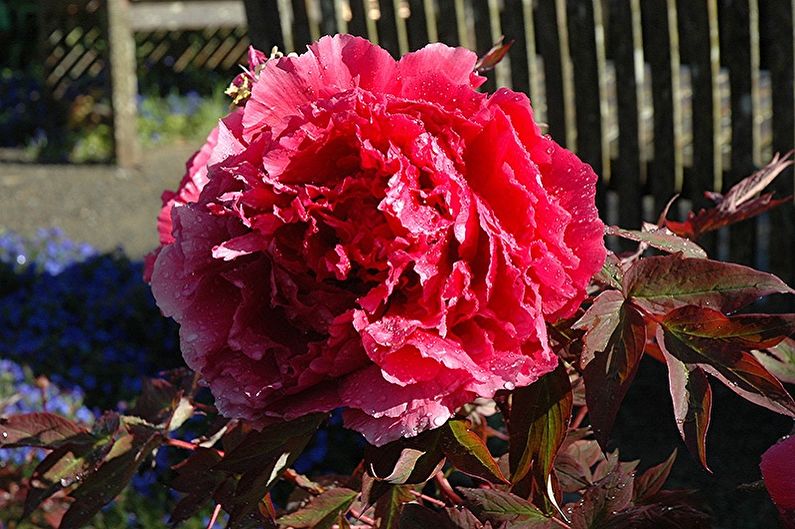
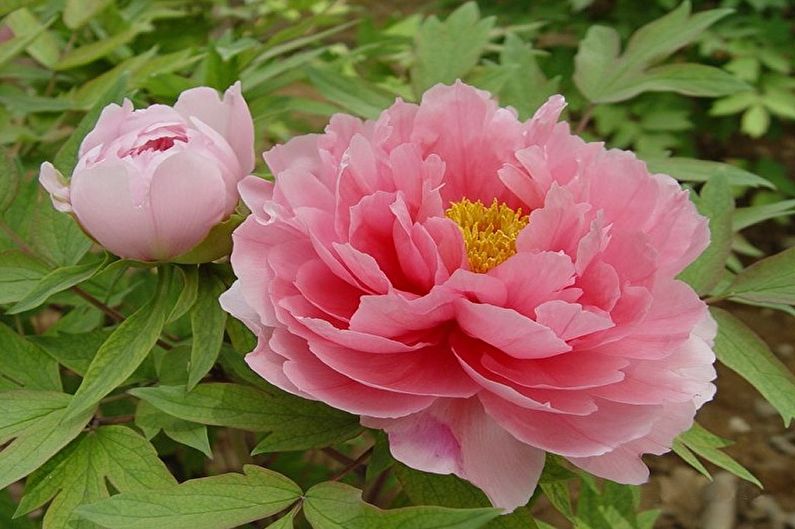
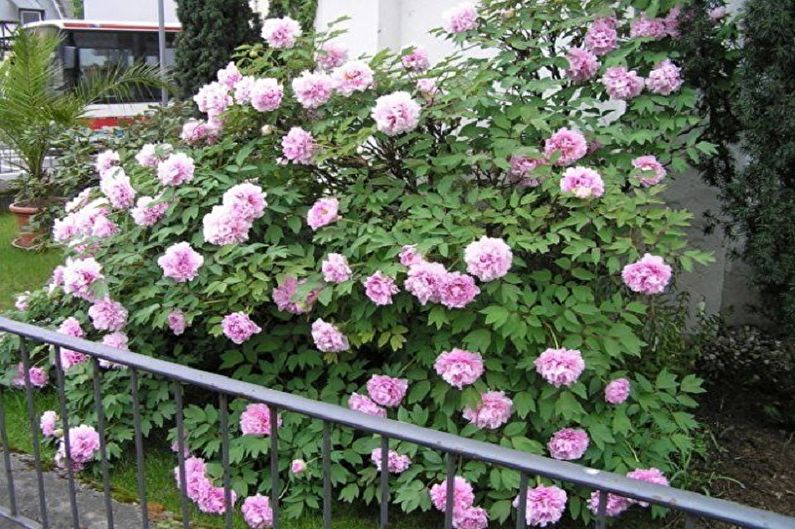
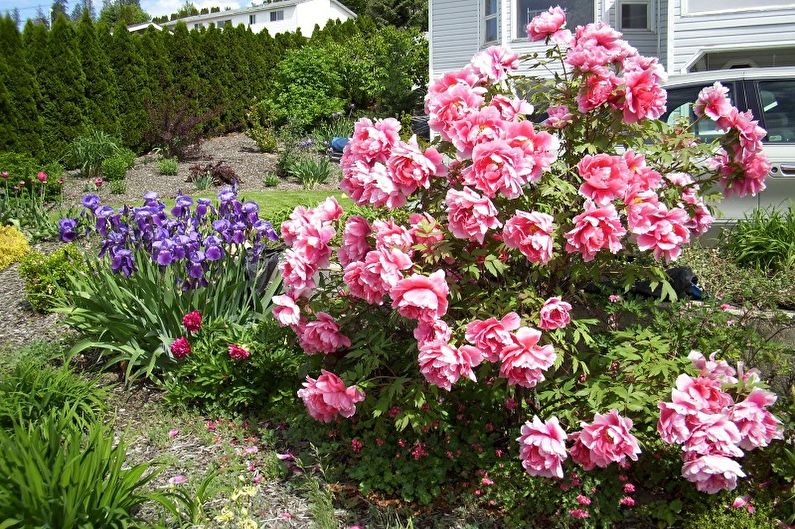
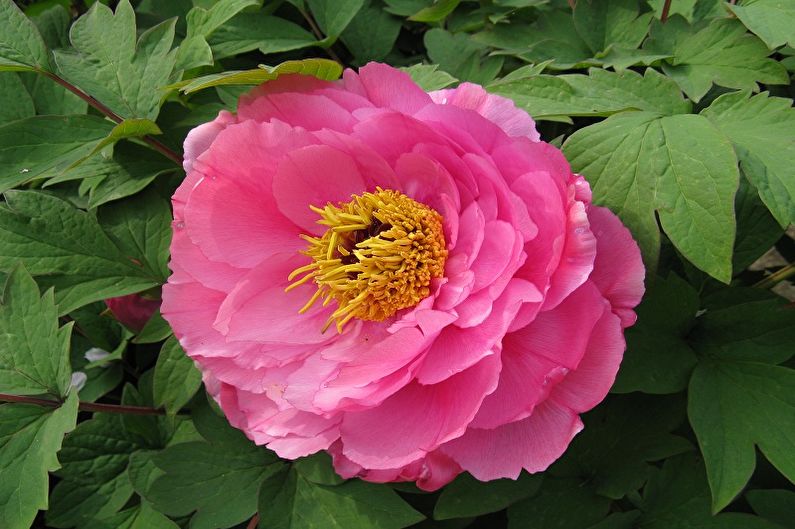

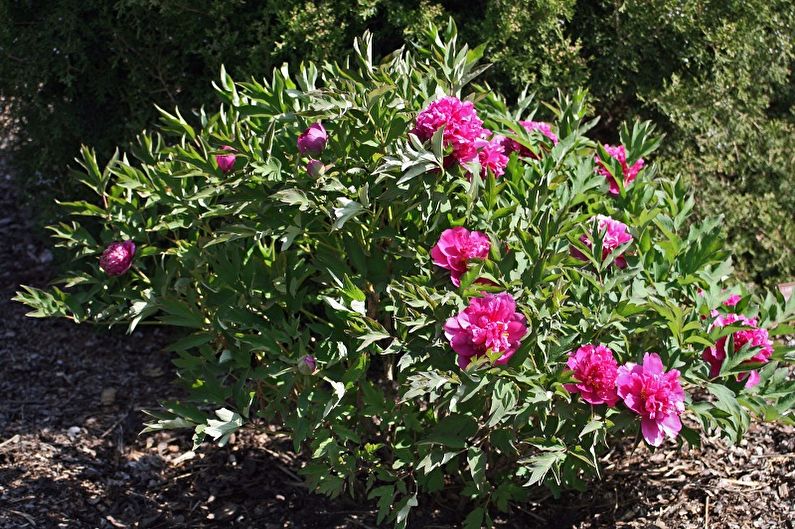
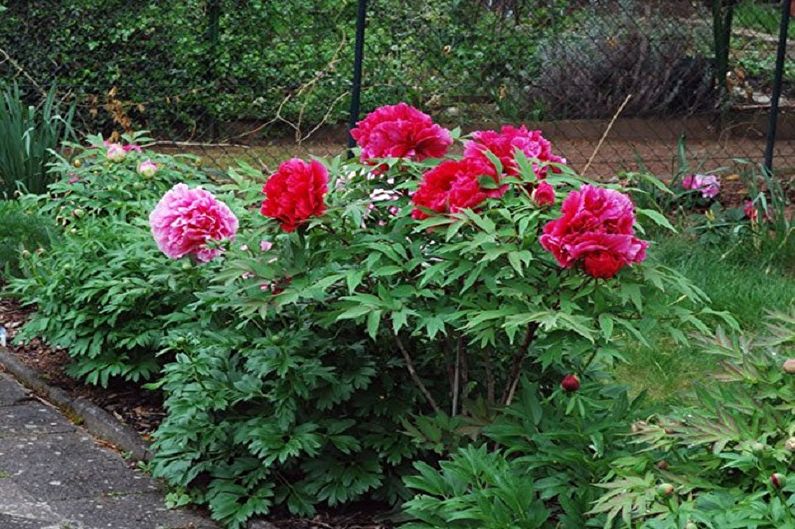
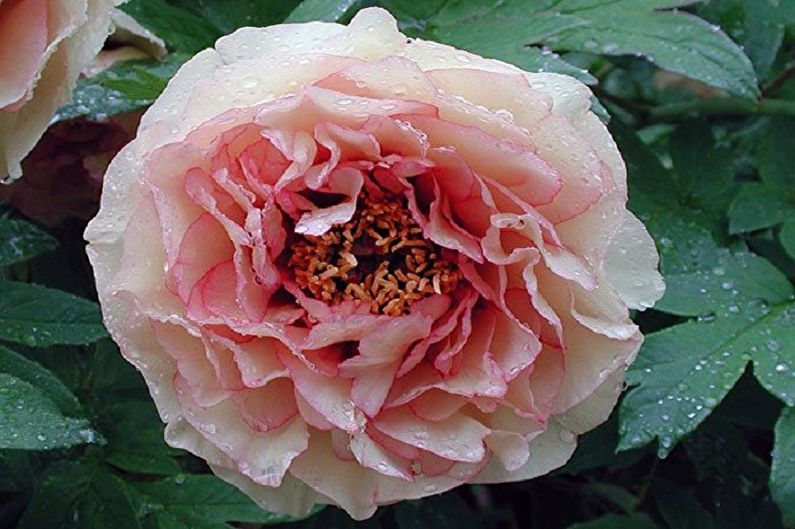
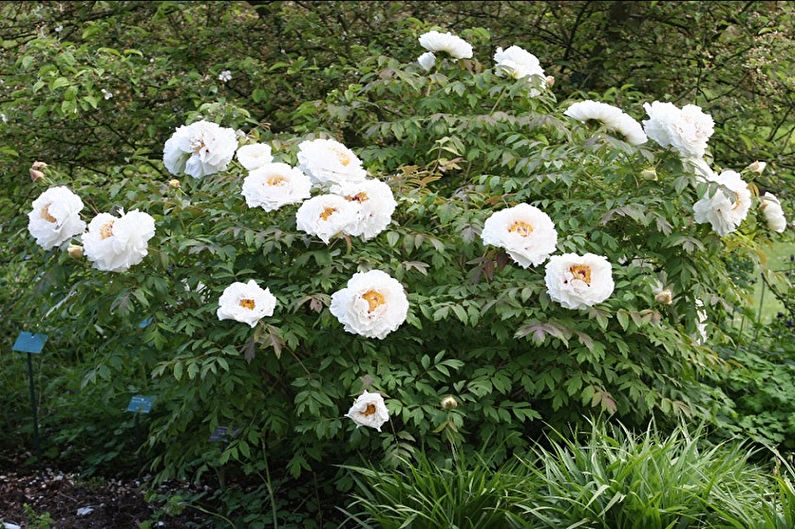
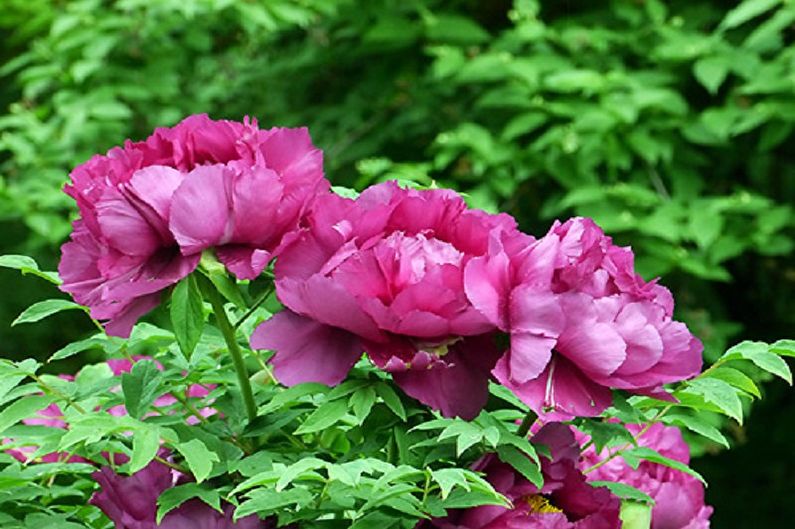






Leave feedback about this